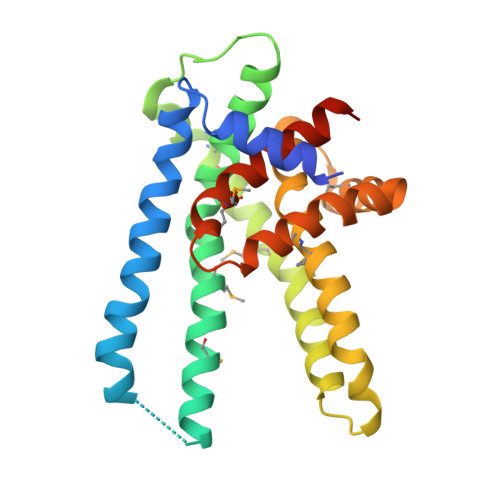Structure-based analysis of CysZ-mediated cellular uptake of sulfate.
Assur Sanghai, Z., Liu, Q., Clarke, O.B., Belcher-Dufrisne, M., Wiriyasermkul, P., Giese, M.H., Leal-Pinto, E., Kloss, B., Tabuso, S., Love, J., Punta, M., Banerjee, S., Rajashankar, K.R., Rost, B., Logothetis, D., Quick, M., Hendrickson, W.A., Mancia, F.(2018) Elife 7
- PubMed: 29792261
- DOI: https://doi.org/10.7554/eLife.27829
- Primary Citation of Related Structures:
6D79, 6D9Z - PubMed Abstract:
Sulfur, most abundantly found in the environment as sulfate (SO 4 2- ), is an essential element in metabolites required by all living cells, including amino acids, co-factors and vitamins. However, current understanding of the cellular delivery of SO 4 2- at the molecular level is limited. CysZ has been described as a SO 4 2- permease, but its sequence family is without known structural precedent. Based on crystallographic structure information, SO 4 2- binding and flux experiments, we provide insight into the molecular mechanism of CysZ-mediated translocation of SO 4 2- across membranes. CysZ structures from three different bacterial species display a hitherto unknown fold and have subunits organized with inverted transmembrane topology. CysZ from Pseudomonas denitrificans assembles as a trimer of antiparallel dimers and the CysZ structures from two other species recapitulate dimers from this assembly. Mutational studies highlight the functional relevance of conserved CysZ residues.
Organizational Affiliation:
Department of Physiology and Cellular Biophysics, Columbia University, New York, United States.















